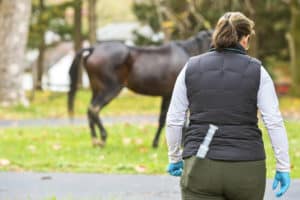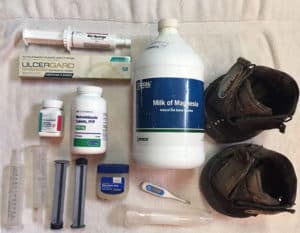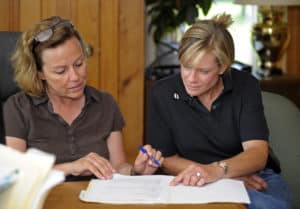A Safe Place to Land
- Topics: Horse Sense (and Sensibility)
 Last weekend I received an e-mail from a veterinarian at the University of Pennsylvania that warmed my heart and, quite frankly, got me a little teary-eyed. Keep in mind that much of my correspondence with veterinarians involves clarifying 18-syllable words having to do with equine physiology and planning for upcoming coverage. I find these more clinical-type situations all very stimulating (I’m not kidding, I dig this informationÑjust ask my staff how I light up when I start talking about the life cycle of Neorickettsia risticii!), but this e-mail was a special treat.
Last weekend I received an e-mail from a veterinarian at the University of Pennsylvania that warmed my heart and, quite frankly, got me a little teary-eyed. Keep in mind that much of my correspondence with veterinarians involves clarifying 18-syllable words having to do with equine physiology and planning for upcoming coverage. I find these more clinical-type situations all very stimulating (I’m not kidding, I dig this informationÑjust ask my staff how I light up when I start talking about the life cycle of Neorickettsia risticii!), but this e-mail was a special treat.
Before I tell you about the e-mail, here’s a back story: My family and I bred and raised a mare that I broke to ride back in 2001. Mocha, a Westphalian/Danish Oldenburg cross, was out of a phenomenal mare that I rode my freshman year at Averett, and by a stallion, Aslan, who was at the school for a time. 
The leggy bay filly with colossal joints was born one June morning in 1998 at my parents’ farm. On a hillside. In a thunderstorm. Then her dam tried to step on her a few times with her huge, platter-sized feet. Mocha managed to survive all that and grew into a big-bodied, opinionated, but somehow very sweet mare.
As with every loved horse, there are many memories that accompany my years with Mocha, from her very first blissful canter under saddle (this riding stuff seemed completely natural to her) to the time she amazed us by jumping out of a pasture with a 5.5-foot fence because the other mares weren’t so pleased with her. (I must add that she secured her position as alpha mare within a few weeks.) I ended up selling her in 2004, and she had several homes as a dressage horse before landing with a college student who adored Mocha as much as I did and tried her in the jumpers.
Create a free account with TheHorse.com to view this content.
TheHorse.com is home to thousands of free articles about horse health care. In order to access some of our exclusive free content, you must be signed into TheHorse.com.
Start your free account today!
Already have an account?
and continue reading.

Written by:
Stephanie L. Church, Editorial Director
Related Articles
Stay on top of the most recent Horse Health news with














